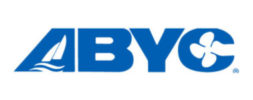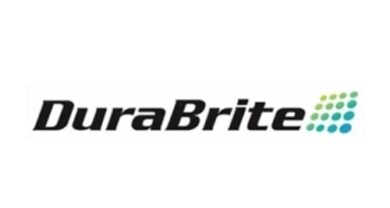Two Stroke vs. Four Stroke: Does It Matter?
As outboard engine manufacturers prepare to release their 2004 model year line-up, the question arises whether the distinction between low emission two-stroke engines and low emission four strokes really matters anymore.
Some manufacturers argue that the new two-stroke direct injection technology being introduced into the market offers many of the benefits previously offered only in a four stroke, such as quiet, efficient, reliable and smokeless operation.
For example, Bombardier claims its new Evinrude E-TEC line “is years beyond two-stroke, four-stroke or even direct injection.” It offers “cleaner, quieter and more efficient power than current industry offerings,” the company says.
Other manufacturers state that the new four strokes on the market have been designed to offer all of the benefits previously offered only by two strokes, such as quicker acceleration and lower power-to-weight ratios. In addition, they say the price gap between the two technologies is shrinking as two-stroke direct injection engines become more sophisticated.
Suzuki, for example, has been replacing its two-stroke engines with four strokes for the past several years, and it pledges that each four-stroke motor it introduces will have the performance of the comparable two stroke it is replacing. The company’s goal is to become a four-stroke only marine manufacturer, a goal it is closer to reaching with the introduction of its 200-, 225- and 250-hp V6 four-strokes.
Perception remains a hurdle
However, even if four-stroke and two-stroke DI technologies advance to a point where they are virtually indistinguishable to Joe Consumer, perception is one hurdle manufacturers continue to face. The rumor that two-strokes are going to be banned as part of future environmental legislation is a misperception that has been hard to correct, says Don Lewis, owner of Aurora Marine, Denver, Colo.
Though Lewis says he is convinced of the benefits offered by the latest two-stroke direct injection technology, he points out that dealers often have to choose between spending the time to educate a consumer about the new two-stroke technology, in which case he risks losing the customer to another four-stroke dealer, and quickly and easily talking the customer into a four-stroke engine.
However, while the popularity of four strokes is growing, this type of engine has its own perceptions to overcome, especially among performance-oriented consumers who still see four-stroke engines as pricey, slow and heavy in comparison with two-strokes.
Niche markets have special needs
Joe Consumer may not notice significant differences between today’s high-tech outboard alternatives, but there are many niche markets within the recreational marine business in which small differences mean a lot and this isn’t likely to change anytime soon, say some manufacturers. These niche markets combined make up a significant percentage of the overall outboard market.
For example, in the competitive bass fishing arena, a fast holeshot can make the difference between winning or losing a competition. As a result, this sector is still dominated by dedicated two-stroke consumers. The offshore fishing market, in contrast, has largely been dominated by four-stroke engines.
Admittedly, the popularity of four-stroke engines is growing. The outboard market, however, remains dominated by two-strokes, many of which are carbureted. As it gets closer to the EPA’s 2006 outboard emissions deadline, the majority of those looking to buy a new engine will either convert to a two-stroke direct injection engine or a four-stroke model.
Some manufacturers say they are committed to offering both low emissions two-stroke and four-stroke technologies, giving their customers the ultimate choice. However, Honda Marine and Suzuki remain committed to a four-stroke-only future.
— By Liz Walz
Product Listings
Bombardier Evinrude E-TEC
Introduced in 40-, 50-, 60-, 75-, and 90-hp models, Bombardier’s new E-TEC engines represent what the company says is a new era in outboard technology. The environmentally responsible engine is said to operate at whisper-quiet sound levels, and it will reportedly require an extremely low amount of maintenance — none for three years, in fact. The engines are designed to be three-star compliant through CARB’s ranking system, by optimizing oil and gas consumption. Fuel reaches the exhaust port only after it has closed, at one-half the time of traditional direct injection engines. This means the fuel charge does not escape the combustion chamber —especially during idle —as it is burned and turned into power.
Honda BF225
Honda’s BF225 V6 is what Honda calls the most technologically advanced engine on the market. The exclusive VTEC, or Variable Valve Timing and Lift Electronic Control system, delivers a unique combination of optimum performance and outstanding fuel economy, according to Honda. The 60-degree V6 offers a powerful, compact 24-valve SOHC design that is said to optimize intake charge and exhaust gases to maximize combustion efficiency. Plus, Honda says the engine runs so quietly that there is no need for sound-dampening insulation.
Mercury 115 hp OptiMax Saltwater
Built for just about any purpose and just about any boat, the new 115-horse OptiMax from Mercury can be put to the test in either saltwater or freshwater. Mercury says that this 1.5-liter engine combines the best of two- and four-stroke worlds, providing traditional two-stroke performance with crucial low-emissions technology. The performance side is generated from a two-stage direct fuel injection system that also creates a clean engine worthy of a three-star CARB rating. OptiMax engines are said to get up to 45- percent better fuel economy.
Nissan 90 TLDI
Nissan Marine offers its 90 TLDI, a direct injection outboard that meets the EPA’s 2006 emissions standard. This outboard features several safety sensor functions such as a water temperature sensor built into the block so that it can provide a more accurate internal temperature to prevent overheating, a rev-limit sensor to limit RPM range, an oil level light that provides a warning to possible low oil levels, and dual Throttle Position Sensors that will increase air flow precision.
Suzuki 250-horse V6
Suzuki’s 250-horse V6 outboard is the world’s first V6 four-stroke of its power rating. The introduction has garnered the company the NMMA’s 2003 Innovation Award for the Engines/Motors/Propulsion
category. The new V-design block combined with Suzuki’s offset driveshaft allowed the company to design a narrow, compact profile motor with improved balance on the transom. The dual-overhead-cam, 24-valve powerhead with 3.6-liter displacement and a newly engineered lower unit, Suzuki says, means a superior hole shot and better performance across the powerband.
Tohatsu 30 hp Four-Stroke
Tohatsu Outboards offers its 30-hp four-stroke engine, which meets the EPA 2006 emissions standard. The engine model features through-the-prop exhaust for quietness, a thermostatically controlled cooling system for consistent engine temperature, start-in-gear protection, a stainless-steel water pump housing for durability, and advanced cross flow induction for smooth operation. In addition, the company offers a three-year limited warranty on the engine.
Yamaha HPDI Outboards
Yamaha has introduced a trio of new High Pressure Direct Injection outboards in two different platforms. The Z250 HPDI outboard is available in 25″ and 30″ shafts in standard and counter-rotating models — aimed at the offshore angler. For bass anglers, the VMAX Z250 and Z225 engines have specially designed lower units to help get to the bass. All three of the outboards utilize a new 3.3-liter engine block and next-generation HPDI technology. The fuel is injected into the cylinder at 1,000 psi, resulting in geater fuel atomizaion for maximum fuel efficiency and combustion.




